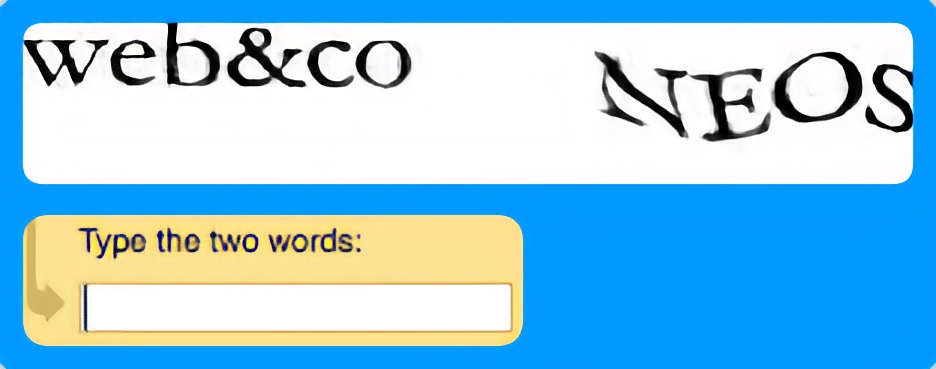Basic information about Captcha
What is a CAPTCHA?
A CAPTCHA is an anti-bot measure or anti-robot check. A user is given a task to solve in order to verify that they are human. In this sense, the main purpose of CAPTCHA solutions is to ensure that real people fill out internet forms such as a contact form, web registration or login screen, and not bots or other illegal, harmful automated applications. In other words, CAPTCHA applications aim to prevent or impede malicious attacks on websites, applications and APIs.
CAPTCHA
CAPTCHA is the abbreviation for "Completely Automated Public Turing Test to tell Computers and Humans Apart"
How does a CAPTCHA work?
As part of an anti-robot verification process, the most commonly used CAPTCHAs ask the user to complete a task before a web registration or contact message can be sent. Validation procedures are used here that indicate the success or failure of the user in completing the task.
Using the example of an image-based CAPTCHA, an image caption and several images are provided by a server. The user marks all the images that correspond to the image caption. The ID of the images is reported back to the server and the check cycle determines whether the CAPTCHA task has been solved. If the check is positive, for example, the user receives a message "I am not a robot" and the contact message data is sent to the server.
In another example, instead of an image, characters are generated in a distorted form or partially overlapping, which are designed in such a way that they are easy for humans to read but difficult for machines to decipher. The distortion of the characters can go very far. From different scaling, rotation and distortion to the superimposition of graphic elements such as color, background noise, lines, arcs or dots, there are many possibilities. When solving the task, the human ability to generalize and recognize new patterns without further ado based on previous experience is used. Bots first have to be programmed for this.

Media credits
| Image | Copyright | Author |
| ###IMAGE### | ###COPYRIGHT### | ###AUTHOR### |